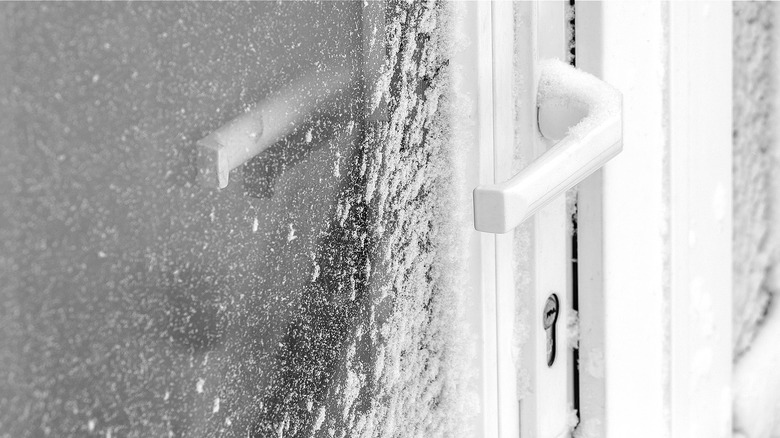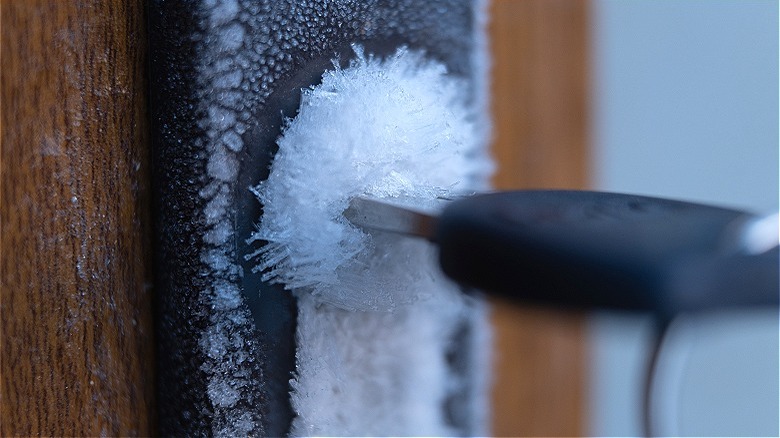TikTok's Simple Trick Will Make It Easier To Thaw Frozen Door Locks This Winter
Winter might usher in cozy home décor and a merry, festive spirit, but for many people, it also means frigid temperatures, uncomfortable ice storms, and all the home (maintenance) issues that come with plummeting temps. Some of these issues are obvious — like shoveling mountains of snow or protecting your pipes from freezing — but other problems are a little less apparent — like dealing with frozen locks. If you're not prepared, this can leave you with a permanently sealed door and/or a potentially broken door lock, but there's a simple way to gain access again: As TikTok has shared, you simply need to heat it from the inside.
This will, of course, require you to use a different door to get into your home, so hopefully you can get in through the garage door or a back door. Once inside, all you'll need is a hair dryer to fix your problem. This is a great hack to try since most folks already have a blow dryer in their home, negating the need to run out and buy a specialty product when you need to unfreeze a door lock in a pinch.
Thaw frozen door locks with a hair dryer
A door lock freezes not only because of dangerously low temperatures; it also requires moisture to find its way into the keyhole. This could've happened during a previous snowfall or ice storm, when snow or ice fell into the keyhole, melted, and then froze when the temps dipped low enough again. If you're faced with this issue, simply melt the ice.
To do so, grab a hair dryer and direct heat onto the frozen lock. Working from inside the house rather than outside should make the ice melt faster since it's warmer indoors. This said, if you can't get inside your house, you could try using a hair dryer from the outside to achieve the same results (if you can find an outlet nearby, that is).
With hair dryer in hand, move the device back and forth over the keyhole, being careful not to make the handle too hot. Next, heat the key in the same manner. It might be a good idea to put on a pair of gloves while warming the key since the metal will heat up and could potentially burn you. Once it's sufficiently warmed, insert the heated key into the lock. It should be able to work again as normal since the ice has since turned back to water. To ensure this doesn't happen again, lubricate the inside of all your keyholes and locks with powdered graphite, which will chase out any moisture, ensuring the insides won't freeze a second time during the season.

